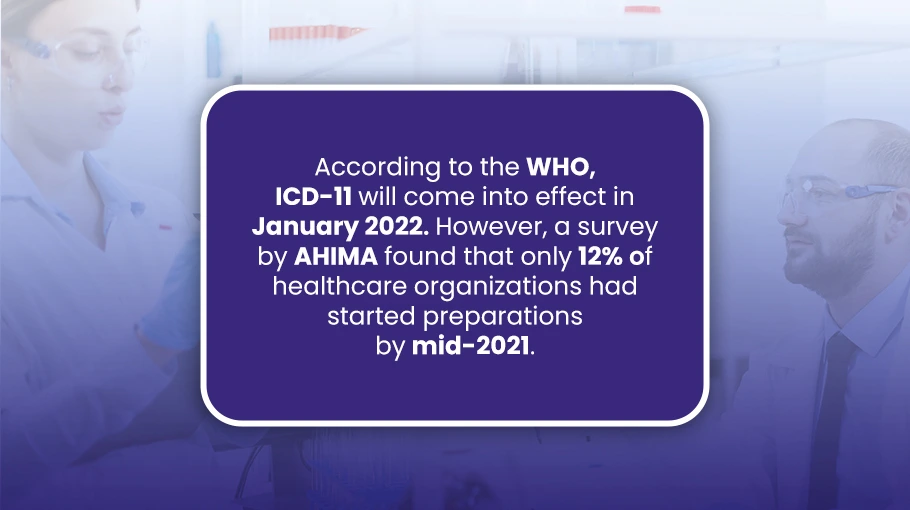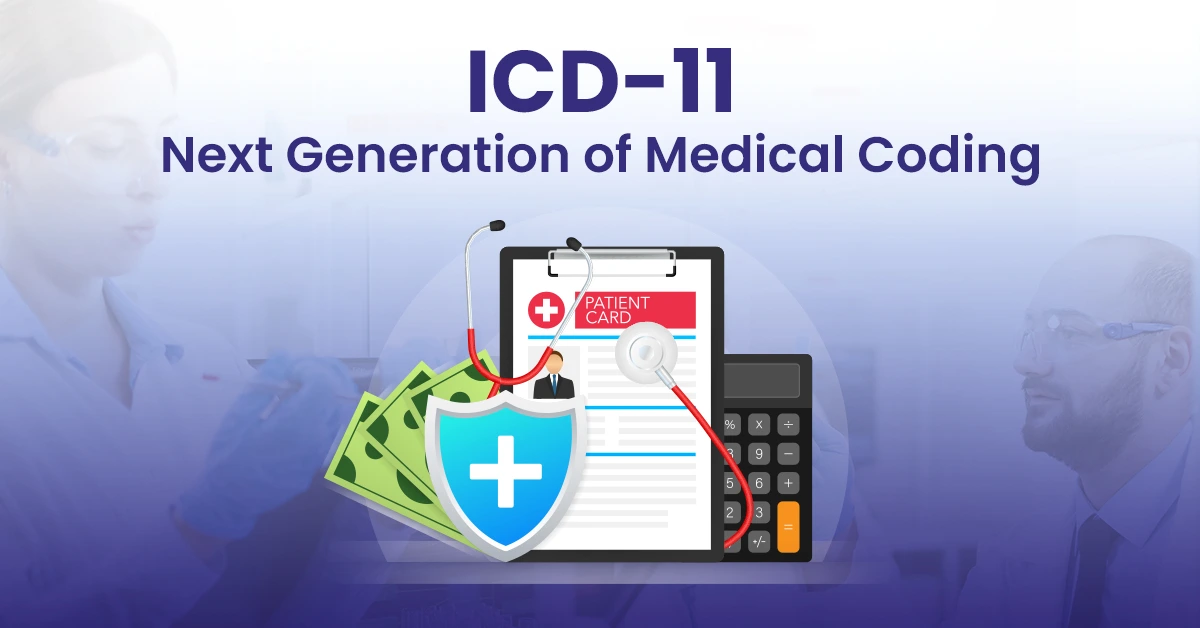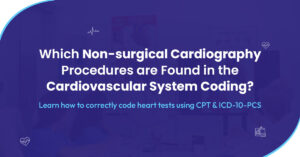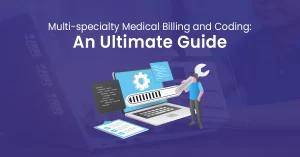The 11th generation of the International Classification of Diseases (ICD-11) quickly shifts to the next coding ecosystem, replacing the ICD-10 version. This change will undoubtedly impact healthcare providers, practices, and medical professionals across various specialties. ICD-11 is now formally used for recording and reporting sickness, death, and other causes nationally and internationally.This blog discusses the ICD11, its implications, and its transition.
Understanding ICD-11
The International Classification of Diseases, or ICD, is the medical coding system that enables professionals to effectively exchange complex language into clear codes. The World Health Organization (WHO) introduced this standardized method to categorize and code a variety of illnesses, medical ailments, and associated health issues. A common coding language that enables medical professionals to exchange standardized information globally
The ICD-11 introduces a more sophisticated and comprehensive coding system that can handle the complexity of modern healthcare practices. ICD-11 is more than just an update; it represents a revolutionary change in how diseases and other health issues are categorized, accurately reflecting medical knowledge and technology developments.
ICD 10 Vs. ICD 11
| Aspect | ICD-10 | ICD-11 |
| Release Date | 1990 | 2018 (adopted by the WHO) |
| Structure | Alphanumeric codes | Alphanumeric codes |
| Chapters | 21 | 26 |
| Entities | ~14,000 distinct codes | ~55,000 distinct codes |
| Detail | Less detailed in some areas | More detailed and granular |
| Terminology | It uses some outdated terminology | More contemporary terminology |
| Inclusion of External Causes | Yes, in a separate chapter | More detailed with a dedicated section |
| Clinical Information | There are no specific definitions or clinical information for many codes | Accompanies many codes with clinical descriptions, diagnostic criteria, and other relevant information |
| Use of Extensions | Limited | Expanded use of extension codes for more detailed information |
| Multilingual Support | Limited | Improved multilingual support with the ability to operate in multiple languages |
| Electronic Health Compatibility | Not initially designed for electronic health systems | Designed with electronic health information systems in mind |
| Mortality and Morbidity Coding | Used for both, but with some limitations | Enhanced capability for mortality and morbidity coding |
| Updates and Maintenance | Regular but infrequent updates | A dynamic platform for regular updates |
Implications of ICD-11
ICD-11’s introduction will likely significantly alter the healthcare industry, impacting all healthcare professionals, including physicians and medical coders. Although this new system has numerous advantages, it requires extensive planning, notably regarding resource allocation and training. In this section, we’ll look at the effects of the ICD-11 transition.
Training of Healthcare Providers
The transition to ICD-11 isn’t merely about learning new codes but understanding a fundamentally different and more complex system. This change needs training for healthcare providers to ensure accurate and efficient coding. The training should encompass not only the new codes but also the enhanced features and digital compatibility of ICD-11.
Healthcare professionals can increase the accuracy of their diagnoses, more efficiently plan treatments, and precisely track illness patterns with a more thorough and exact system.
Latest Classification
The significant contribution of ICD-11 is categorizing the complex codes, making them easy to understand. For example, it includes more specific types of immune system diseases, allowing for more accurate medical coding and tracking of conditions like autoimmune diseases and allergies.
Similarly, ICD-11 has expanded the classification related to sexual health, enabling more precise and comprehensive documentation of conditions in this domain. Given the growing acknowledgment of the significance of sexual health in terms of overall well-being and the need for specific statistics to guide policy and practice in this area, this represents a significant step forward.
Relevance in Modern Healthcare
In the ICD-11 coding system, healthcare providers can achieve higher precision in diagnosis, treatment planning, and tracking of disease trends. Moreover, it aids in conducting more rigorous research and contributes to more accurate public health data, informing better health policies and interventions.
Understanding ICD-11 is not just a matter of ICD-11 training. It is about an understanding of health and diseases. It represents the future of global health communication – a lot that promises more accurate, comprehensive, and meaningful dialogue about human health.
ICD-11 Transition
Switching from ICD-10 to ICD-11 in medical coding is challenging for healthcare providers. It will require time, resources, and commitment. However, with adequate preparation and a focus on comprehensive training, providers can smoothly navigate this transition. Embracing ICD-11 is not just about adapting to a new coding system; it’s about optimizing patient care and contributing to advancing global health. It will need investing in training, updating electronic health record systems, and establishing a solid transition plan.

Shift from ICD-10 to ICD-11
ICD-11 is not a mere extension of its predecessor, ICD-10. Instead, it represents a complete revamp, expanding the code set from about 14,400 in ICD-10 to more than 55,000 unique codes in ICD-11. Since the last revision, which took place more than two decades ago, there have been significant improvements in medical expertise and technology, as seen by a rapid increase in codes.
Expanded Spectrum of ICD-11
The increased code set of the ICD-11 enables a more thorough and nuanced description of illnesses, medical conditions, and the factors that lead to harm or death. It may accommodate diseases and disorders discovered since the establishment of ICD-10 and anticipated future ones. This level of specificity makes it possible to capture and report health information more accurately, which enhances patient treatment, research, and public health surveillance.
Digital Age and ICD-11
Additionally, ICD-11 is designed to operate in a digital environment, making it a better fit for modern electronic health record systems. It includes features such as post-coordination, which allows for combining multiple codes to provide a more comprehensive picture of a patient’s condition. This is a significant upgrade from ICD-10, which primarily relies on pre-coordinated codes that may not fully capture the complexity of a patient’s condition.
The transition from ICD-10 to ICD-11 is a necessary step in the evolution of healthcare. The expanded and more complex coding system of ICD-11 mirrors the significant advancements in medical knowledge and technology and prepares us for future developments. The move to ICD-11 will enable healthcare providers to deliver better care, conduct more thorough research, and contribute to more accurate public health data.
Conclusion
The ICD-11 transition can be challenging for healthcare providers. By adequately preparing and leveraging the right tools and strategies, providers can make this transition successful, ultimately improving patient care and efficiency. By navigating this change proactively and strategically, healthcare providers can position themselves for success in the next generation of medical coding.




